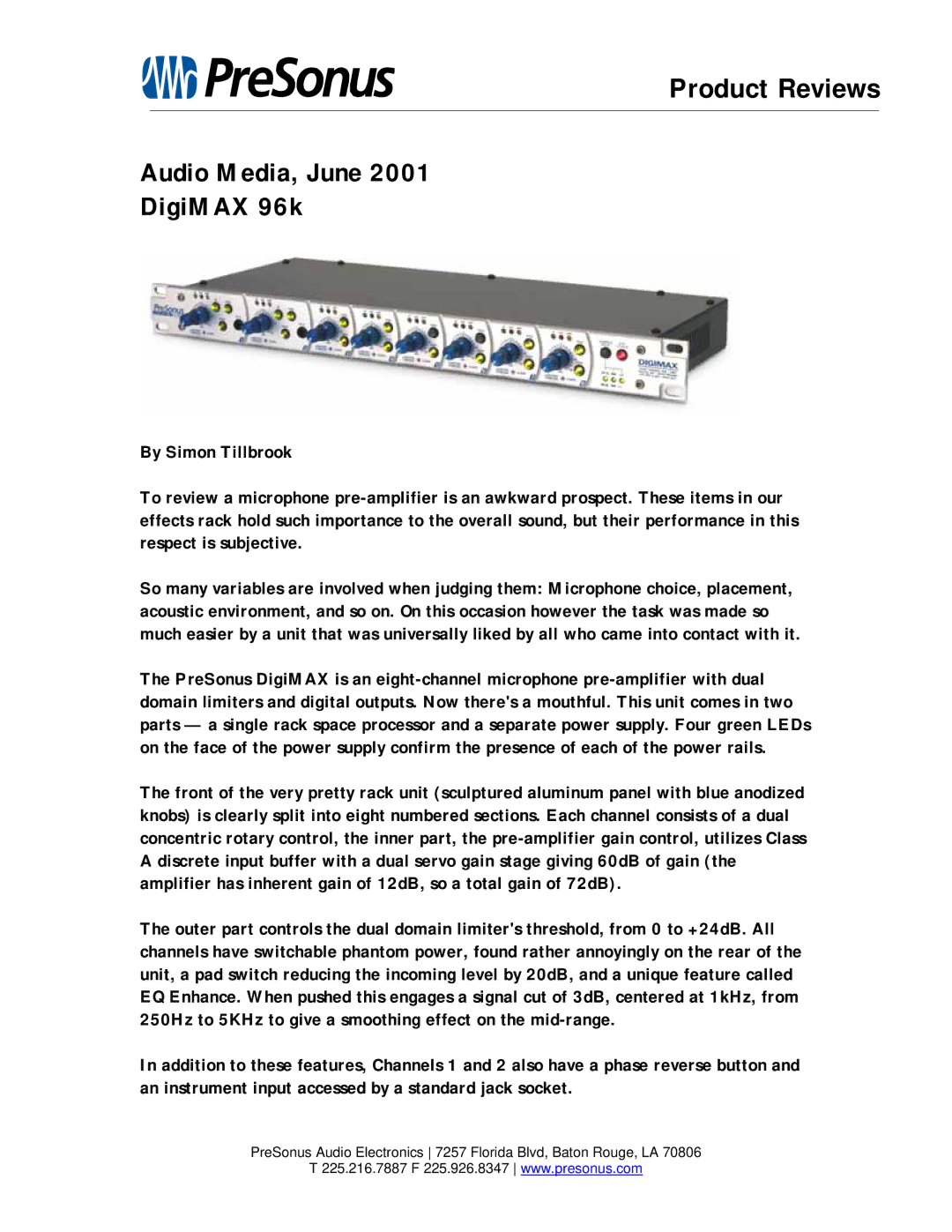96k specifications
Presonus Audio Electronics, a well-known name in the realm of professional audio equipment, has made significant strides with its 96k audio interfaces. These devices have evolved to meet the demands of modern audio production, providing high-definition audio quality and an array of features tailored for both novice and professional sound engineers.One of the standout characteristics of the Presonus 96k audio interfaces is their impressive 24-bit/96kHz resolution. This level of fidelity ensures that recordings capture the nuances and subtleties of sound with remarkable clarity. Musicians and sound engineers can appreciate the depth and richness brought to their audio tracks, making the interfaces ideal for studio recordings, live performances, and broadcasting.
Equipped with advanced A/D and D/A converters, the Presonus 96k interfaces guarantee low latency and minimal distortion during the conversion process. This technology helps maintain the integrity of audio signals, allowing for seamless recording and playback. Furthermore, the interfaces feature high dynamic range, which contributes to a more detailed and expressive sound.
The hardware is complemented by users-friendly software, including PreSonus’ Studio One Artist digital audio workstation. This allows users to harness the full potential of their audio interface right out of the box, providing a comprehensive solution for recording, mixing, and mastering. The included software often features plugins, virtual instruments, and a host of editing tools that streamline the production process, empowering artists to achieve professional results.
Connectivity is another strong suit of the Presonus 96k interfaces. They typically come equipped with multiple inputs and outputs, including XLR/TRS combo jacks and MIDI ports. This versatility enables users to connect various instruments and microphones effortlessly, making it suitable for both solo artists and full bands.
Additionally, the interfaces feature built-in headphone outputs with independent volume control, enabling real-time monitoring without interfering with the main output. This is particularly beneficial during recording sessions, allowing performers and sound engineers to hear exactly what’s being captured.
Another hallmark of the Presonus 96k interfaces is their robust build quality and design. They are often compact and portable, making them perfect for studio setups or on-the-go recording. The intuitive layout of controls and indicators ensures ease of use, allowing users to focus on the creative process rather than navigating complicated hardware.
In summary, Presonus Audio Electronics’ 96k audio interfaces stand out for their high-definition audio quality, advanced conversion technologies, versatile connectivity, and user-centric design. These features unite to create a powerful tool for anyone serious about audio production, from musicians to sound designers, offering a blend of performance and convenience that is hard to match in today’s market.

